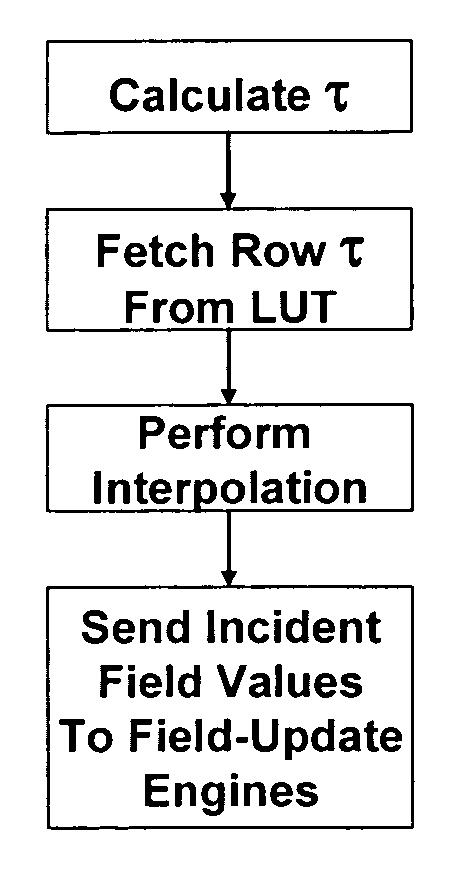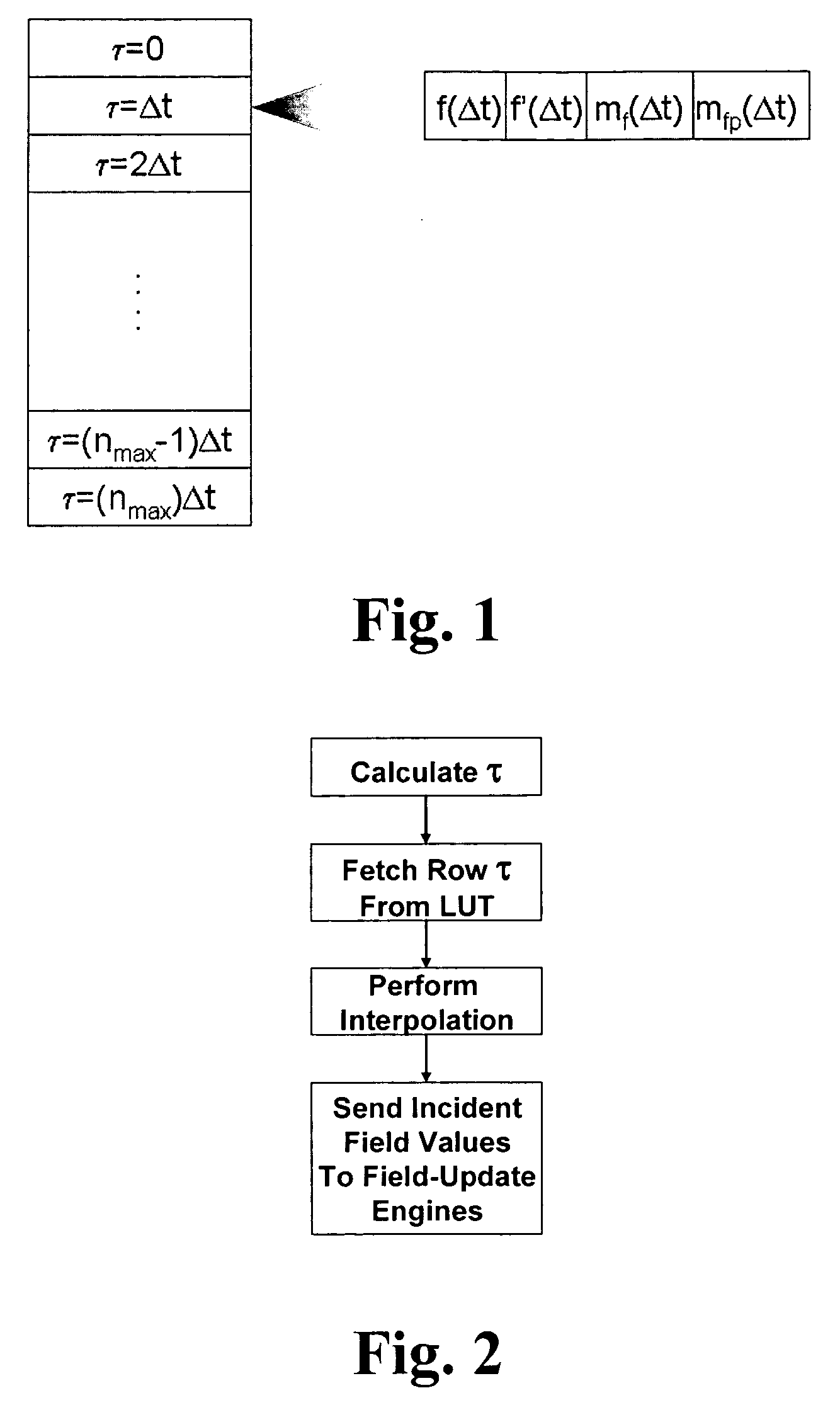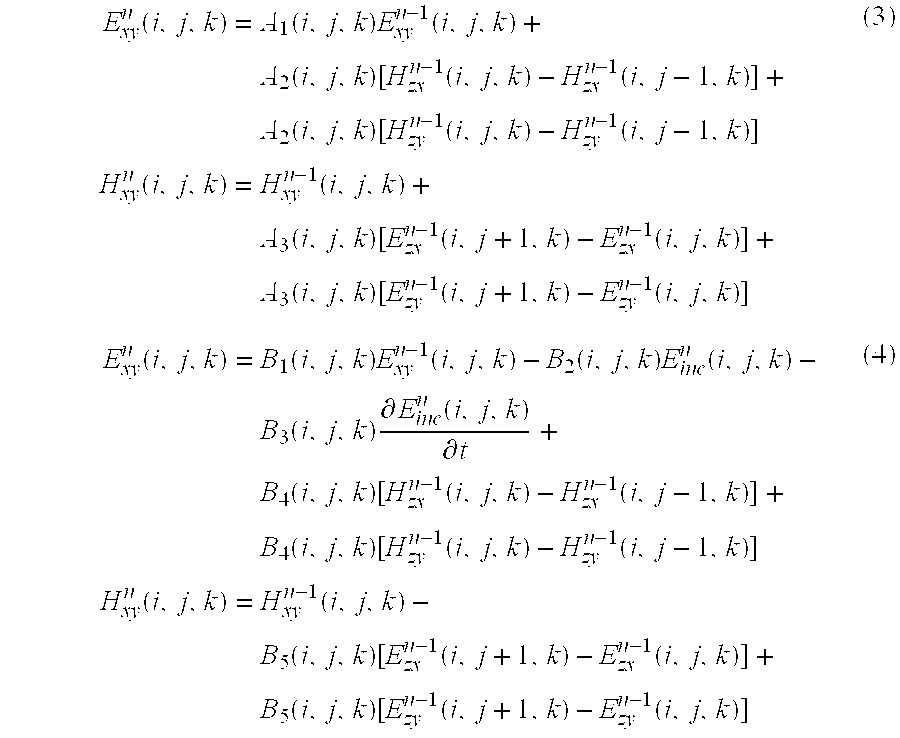Reformulation of the finite-difference time-domain algorithm for hardware-based accelerators
a hardware-based accelerator and time-domain algorithm technology, applied in the field of hardware-based accelerators, can solve the problems of inability to construct them, the serial nature of most software-based implementations does not take advantage of the inherent parallelism found in many cem algorithms, and the computational and memory intensive nature of cem algorithms
- Summary
- Abstract
- Description
- Claims
- Application Information
AI Technical Summary
Benefits of technology
Problems solved by technology
Method used
Image
Examples
Embodiment Construction
[0013] The following detailed description of the invention refers to the accompanying drawings. The same reference numbers in different drawings identify the same or similar elements. Also, the following detailed description does not limit the invention. Instead, the scope of the invention is defined by the appended claims and equivalents thereof.
[0014] A. Introduction
[0015] The present invention may best be seen by first providing a brief description of the attributes that characterize an algorithm as suitable for hardware implementation. Next, the details of the reformulation of the present invention are described. Specifically, the reformulated field-update equations are described, along with how absorbing boundary and incident source conditions are implemented. The description concludes with a brief description of our hardware-based FDTD accelerator and the results obtained with the system. The system of the present invention enables throughputs that rival 90-node personal com...
PUM
 Login to View More
Login to View More Abstract
Description
Claims
Application Information
 Login to View More
Login to View More - R&D
- Intellectual Property
- Life Sciences
- Materials
- Tech Scout
- Unparalleled Data Quality
- Higher Quality Content
- 60% Fewer Hallucinations
Browse by: Latest US Patents, China's latest patents, Technical Efficacy Thesaurus, Application Domain, Technology Topic, Popular Technical Reports.
© 2025 PatSnap. All rights reserved.Legal|Privacy policy|Modern Slavery Act Transparency Statement|Sitemap|About US| Contact US: help@patsnap.com



